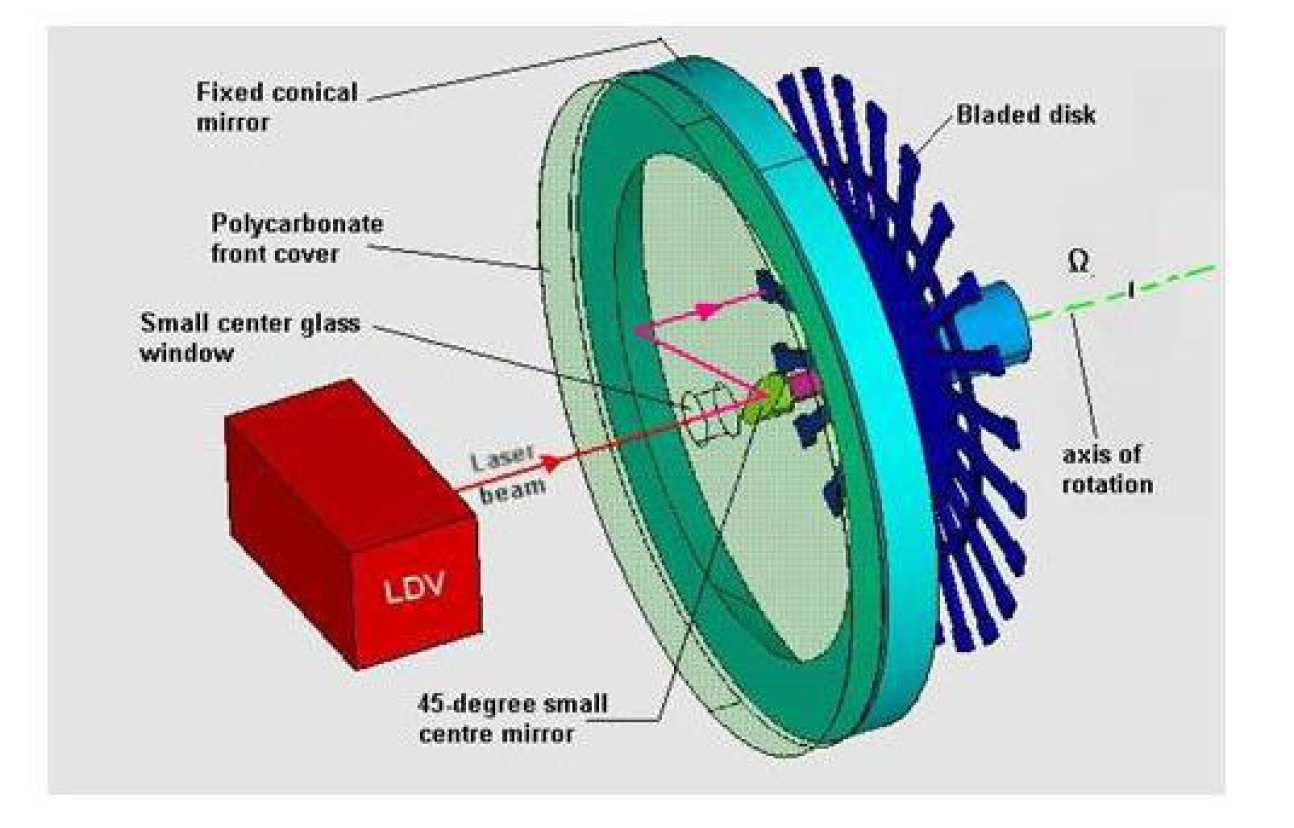ADTurB II - Aeroelastic Design of Turbine Blades
Imperial College's objective: To provide an experimental basis by which we can validate predicted effects of blade mistuning and applied damping on blade vibration levels.
In this project two 24-bladed integral bladed disks (blisks) were used to acquire vibration response data so that the predictions of mistuned and damped blisks could be validated. For this purpose, a well-controlled test rig was designed and manufactured. Measuring the effects of mistuning is so sensitive to instrumentation that measurement and excitation systems need to be non-intrusive. In this project an LDV was used to measure the vibration response and a permanent magnet was used to excite the system. A so-called self-tracking LDV measurement system was devised to track a point on a blade at all times.
Measurements of mistuning were carried out using a carefully machined blisk test piece so that dimensional consistency could be ensured to have a reference tuned case. The blisk’s characteristics were measured at rest and under rotation for tuned and mistuned configurations. Sinusoidal and random mistuning patterns were applied to the blisk for rotating measurements. In both cases the measured response levels were compared with predicted ones and an excellent correlation was obtained.
Friction damped response measurements were performed on a blisk with fitted cottage-roof under-platform friction dampers. Two z-mod plots, for damped and undamped blisk, are given in 3 and 4. For blisks with under-platform dampers optimum damping effect can be attained for a particular range of rotational speeds, below which damper forces are too low and dampers slide freely without introducing any damping, and above which they are too high and lock the dampers. All blade responses were similar and consistent once the bedding-in period was over.



